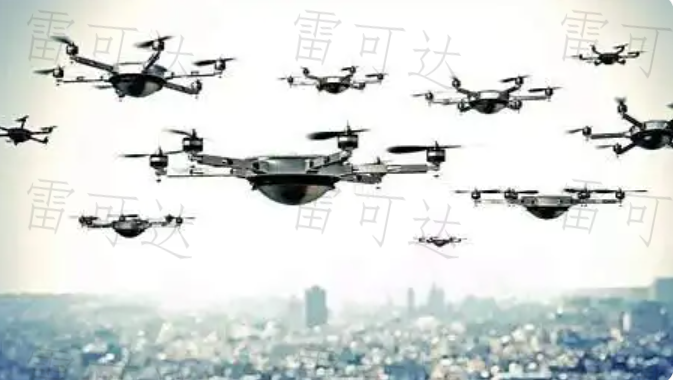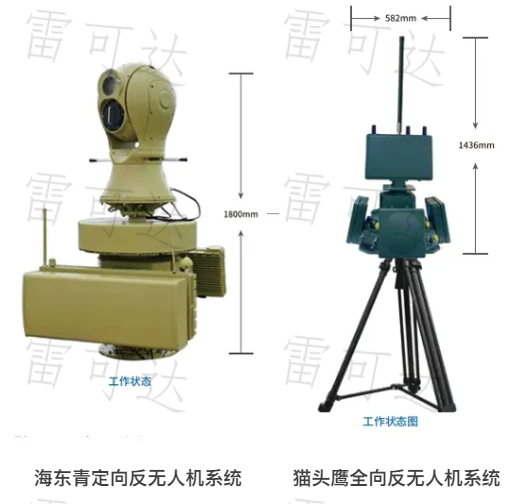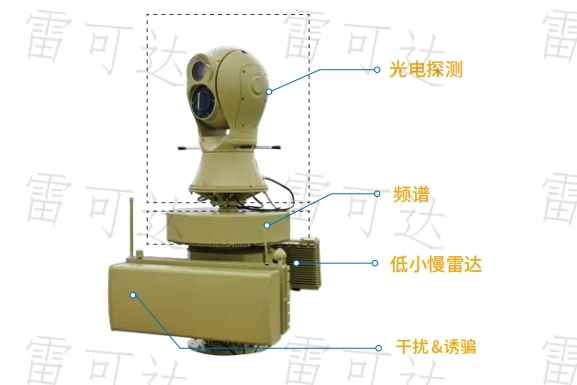Core Technology of Low-Altitude Security: Analysis of the Current State and Future Trends of Counter-Unmanned Aerial Vehicle Systems
With the widespread application of drones in civil and commercial fields, “low, slow, and small” targets (low-altitude, slow-speed, small aircraft) have become a major threat in modern security systems. Counter-drone technology, as a key means to address such threats, is gradually becoming one of the core technologies for ensuring national security, public areas, and critical infrastructure.
This article systematically reviews the current development status, key technical principles, and future trends of counter-drone technology, aiming to provide a reference for research and applications in related fields.

(Image sourced from the internet. If there is any copyright infringement, please contact us for removal.)
1. What is Counter-Drone Technology?
Counter-drone technology, often referred to as drone countermeasure systems or C-UAS (Counter-Unmanned Aircraft Systems), involves systems or equipment that detect, identify, jam, deceive, or control drones through legal and safe means.
Modern counter-drone systems generally adopt a multi-layered defense architecture, integrating multiple functional modules such as detection, identification, tracking, and neutralization. These systems can provide 360-degree all-round protection under various weather conditions, with a typical detection range of over 2 kilometers.
2. Application of Radar Detection Technology in Counter-Drone Systems
Radar technology is one of the core means for target detection. Its fundamental principle involves the transmission and reflection of electromagnetic waves: the system emits electromagnetic waves of a specific frequency, and when the beam encounters a target such as a drone, part of the signal is reflected. By receiving and analyzing these echoes, the system can accurately obtain key information about the target, such as distance, azimuth, altitude, and speed, providing data support for subsequent interception.
Currently, mainstream types of counter-drone radar include:
- Pulse Doppler Radar
- Continuous Wave Radar
- Frequency-Modulated Continuous Wave Radar (FMCW)

Since the radar cross-section (RCS) of commercial drones is typically similar to that of birds, high-resolution radar combined with artificial intelligence and machine learning algorithms can effectively identify and distinguish drones from other flying objects, significantly improving recognition accuracy and system reliability.
3. Phased Array Radar: Mechanical Azimuth Scanning + Electronic Elevation Scanning

Phased array radar with mechanical azimuth scanning and electronic elevation scanning is a high-performance, highly reliable three-dimensional detection device, primarily used for detecting and locating low-altitude aircraft. This type of radar combines mechanical azimuth scanning with electronic elevation scanning to achieve real-time tracking and trajectory prediction of targets, making it widely applicable in sensitive areas such as prisons, airports, and military bases.
Key features include:
- Multi-Dimensional Precision Detection: Supports distance, azimuth, altitude, and speed measurements for low-altitude and ultra-low-altitude targets;
- High Positioning Accuracy: Capable of detecting small-sized, slow-moving targets with a low false alarm rate;
- All-Weather Operation: Supports unmanned operation, avoiding electromagnetic radiation interference with personnel;
- Long-Range Detection: Some models can detect targets at distances of over 25 kilometers;
- Strong Adaptability: Lightweight structure supports rapid deployment and flexible installation.
4. Key Technology Classification of Counter-Drone Systems
1. Soft-Kill Technology
Soft-kill technology disrupts or controls drones through non-physical means, primarily including radio frequency jamming and navigation deception.

Jamming Technology
Radio frequency jamming is the most widely used countermeasure, involving the transmission of high-power signals in the same frequency band as the drone’s communication to block its connection with the remote controller. To counter drone frequency-hopping technology, modern jamming equipment typically combines dynamic frequency jamming with wide-band jamming strategies.
For example, the “Owl Omnidirectional Counter-Drone System” developed by Wuhan Lakeda uses radar and spectrum technology for dual detection within a range of 2–3.5 kilometers. Within 1 kilometer, it combines deception and jamming methods, offering high-precision directional jamming capabilities with a maximum jamming range of 5 kilometers.
Deception Systems
These systems transmit false GPS or BeiDou navigation signals, causing drones to misjudge their position and deviate from their route or land in a safe area.
Lakeda’s “Haidongqing Directional Counter-Drone System” integrates multiple technologies such as electro-optics, radar, jamming, and navigation deception to form a comprehensive defense system. It employs a dual-mode approach of “navigation deception + radio jamming,” achieving effective complementarity in警戒区 (warning zones) and核心区 (core zones), forcing drones to return, hover, or land.

This system also achieves three-level联动探测 (linked detection) of radar, spectrum, and electro-optics, combining active and passive detection methods to efficiently monitor and track targets within a 5-kilometer range.
2. Hard-Kill Technology
Hard-kill technology directly destroys or intercepts drones through physical means, primarily including:
- Laser Weapon Systems
- Kinetic Interceptor Projectiles
- High-Power Microwave Weapons (HPM)
- Physical Interception Nets
5. Challenges and Future Development Directions
Although significant progress has been made in counter-drone technology, systems still face numerous challenges, such as the rise of artificial intelligence, continuous upgrades in drone performance, legal and regulatory restrictions, and adaptation to complex electromagnetic environments.
The future development of counter-drone systems will exhibit the following trends:
- Intelligence and Automation: The introduction of AI decision-making and machine learning algorithms to improve system response speed and accuracy;
- Multi-Functional Integration: Combining various countermeasures to flexibly address different types of drone threats;
- Portability and Stealth: Developing lightweight, easily deployable equipment suitable for temporary security tasks and urban environments;
- Technological Fusion and Innovation: Deep integration of radar systems with directed-energy weapons, spectrum sensing, and big data analysis to build a more comprehensive low-altitude security network.
6. Conclusion
Against the backdrop of rapid iterations in drone technology and increasing security demands, new-generation radar systems, represented by Lakeda’s XW/SR226 series, are driving the升级 (upgrading) of counter-drone defense systems through “technological innovation + scenario adaptation.” From airport airspace protection to border security monitoring, high-precision radar detection has become a core technology for building a national low-altitude security network. In the future, counter-drone systems will further integrate with AI command and control and smart city platforms, providing solid support for national defense and civil security.
Further Reading
- International Civil Aviation Organization (ICAO) — Drones and Airspace Safety: Learn about global drone operation regulatory frameworks and airspace security policy dynamics.
- U.S. Federal Aviation Administration (FAA) — Counter-Unmanned Aircraft Systems (C-UAS): Access officially released guidelines on counter-drone technology and airspace control measures.
- Journal of Field Robotics — Research on Drones and Countermeasures: Read the latest academic papers to gain an in-depth understanding of the technological evolution and research frontiers of counter-drone systems.